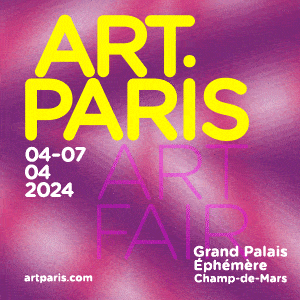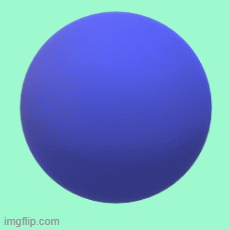Whitehot Magazine
April 2024
"The Best Art In The World"
"The Best Art In The World"
April 2024
Nadia Kaabi-Linke: Forces that Shape our World
 Nadia Kaabi-Linke, Altarpiece, 2015, Silk paper, Wax, Chinese Ink (Encre de Chine), Acrylic (Lascaux), Varnish (Lascaux satin), Wood frame coated in
Nadia Kaabi-Linke, Altarpiece, 2015, Silk paper, Wax, Chinese Ink (Encre de Chine), Acrylic (Lascaux), Varnish (Lascaux satin), Wood frame coated in
24 K gold leaf, 982/5 ×1773/10 ×21/2 in, 250 × 450.4 × 6.3 cm, photo by Mustafa Aboobacker courtesy Lawrie Shabibi Gallery, Dubai.
By ALINA COHEN, OCT. 2015
Nadia Kaabi-Linke
Walk the Line
Dallas Contemporary
Born in 1978 in Tunisia, artist Nadia Kaabi-Linke has taken on such diverse subjects as Italian futurism, domestic violence, and the hawkers who sell counterfeit goods on the streets of Venice. Hers are works that spur discussion and encourage meditation on both the visible and invisible forces that shape our world. On September 20, the Dallas Contemporary opened Walk the Line, an exhibition of Kaabi-Linke’s work curated by Justine Ludwig.
Ludwig was first struck by Kaabi-Linke’s Flying Carpets, for which the artist won the Abraaj Capital Art Prize. “I thought it was amazing,” Ludwig said. “I’ve been following Nadia’s work ever since. It’s unbelievably beautiful and deals with difficult subject matter. An ability to create work with both of these qualities is quite rare.”
Kaabi-Linke’s show effortlessly mingles references to pop culture, art historical periods, and social justice. When asked how the artist pulls this off, Ludwig suggested, “the aesthetic language she uses is very succinct. Even when she’s creating pieces about Futurism or domestic violence, there’s a feeling of subtlety. While the work has these dense narratives, it also allows for interpretation. There are so many ways to read it.”
Whitehot chatted with the artist about the works in the show, her process, and the difficult subjects she tackles.
Alina Cohen: You called this exhibition "Walk the Line", the name of the site-specific work in the show that investigates the Mexico / US border. How did your interest in the border develop?
Nadia Kaabi-Linke: The question of the border is universal. In my personal history I’ve dealt a lot with immigration; my father is Tunisian and my mother Ukranian. Whether I was in Tunisia or Kiev, I was far from family. I now live in Germany, in Berlin, and see how easy it is for my husband to travel, whereas I spend months to get papers.
In Berlin, there are traces of the Wall, of the East and West, everywhere, even in the mentality of the people. When the Berlin Wall fell, there were two blocs—the Soviet Union and the Western World. We’re heading into something similar in which the Islamic world is stigmatized. The geopolitics of today are bringing us back to the idea of borders.
I like doing in-situ work related to building or place. I often take prints of walls, which become “skins” telling the story of city. At the Dallas Contemporary, it was natural to relate to the sense of border between Mexico and the US, Texas in particular.
As for the name, I’m a fan of Johnny Cash and the character he represents. The work is, in part, a tribute to him. He broke social borders by singing at San Quentin State Prison.
The performance itself will involve volunteers walking the actual distance of the US / Mexico border from San Diego, California and Brownsville, Texas--from the Gulf to the Pacific Ocean (excluding maritime boundaries of 29km). They’ll walk around two poles, wrapping them with thread as they go and creating symbolic “walls.” The threads will extend the distance of border. It’s 3,145 km, which will take the duration of the exhibition. A pedometer will count the steps.
 Nadia Kaabi-Linke, Altarpiece, 2015, Silk paper, Wax, Chinese Ink (Encre de Chine), Acrylic (Lascaux), Varnish (Lascaux satin), Wood frame coated in 24 K gold leaf, 982/5 ×1773/10 ×21/2 in, 250 × 450.4 × 6.3 cm
Nadia Kaabi-Linke, Altarpiece, 2015, Silk paper, Wax, Chinese Ink (Encre de Chine), Acrylic (Lascaux), Varnish (Lascaux satin), Wood frame coated in 24 K gold leaf, 982/5 ×1773/10 ×21/2 in, 250 × 450.4 × 6.3 cm
Cohen: And who are the volunteers?
Kaabi-Linke: People from the community for whom the border is part of their lives. Some from the art world, some from outside. People who think it’s important.
With what’s happening in Europe with the Syrian refugees, the idea of the border is very strong right now. The Mediterranean is the border for those living in Africa. This is a universal theme.
Cohen: For "Impunities", you worked with women and men affected by domestic violence. How did you identify them and choose the medium through which you represent their stories?
Kaabi-Linke: This work was done at a residency in London in 2012. It was difficult to get in touch with people who were victims of domestic violence. It’s a hidden phenomenon because it’s accepted in many parts of the world. It’s not always extreme, like bruises. Domestic violence also means everyday pressure and things that would seem innocent like a slap or an insult. This work is called Impunities because these are crimes that often aren’t punished, as they aren’t recognized as such.
I got in touch with shelters in London. Working with these people was complicated because organizations try to protect them, especially from exhibitionism. I was able to do my work because it was much more personal. I wanted to give people a chance to speak out. In fact, many of the people with whom I worked said that by doing the work, they felt they’d shifted from feeling like victims to people taking active roles.
I wanted to choose the correct medium for this topic and investigated forensic techniques, how the police work. They take imprints, thumbprints. I used the same technique to take prints of bruises on skin and reproduced them on paper. I reproduced what was on paper with laser engraving in glass. The traces are almost invisible at the end, as the traces of abuse, though deep, can be invisible to the eye. For example, if a teacher is victim, that will come through, and his or her students will in some way be affected. We’re all linked. This comes back to idea of the border. We all depend on each other. WM
 Bicycle, 2015, Graphite on paper, 254 x 907 cm, © Nadia Kaabi-Linke - Photo: JMCA Courtesy Cristina Guerra Contemporary Art, Lisbon
Bicycle, 2015, Graphite on paper, 254 x 907 cm, © Nadia Kaabi-Linke - Photo: JMCA Courtesy Cristina Guerra Contemporary Art, Lisbon
 Bicycle, 2015, Graphite on paper, 254 x 907 cm, © Nadia Kaabi-Linke - Photo: JMCA photo by Timo Kaabi-Linke courtesy the artist and Cristina Guerra Contemporary Art, Lisbon
Bicycle, 2015, Graphite on paper, 254 x 907 cm, © Nadia Kaabi-Linke - Photo: JMCA photo by Timo Kaabi-Linke courtesy the artist and Cristina Guerra Contemporary Art, Lisbon
 No One Harms Me Unpunished, 2012 Steel, brass, thistles 25 x 136 x 192 cm
No One Harms Me Unpunished, 2012 Steel, brass, thistles 25 x 136 x 192 cm
© Nadia Kaabi-Linke - Photo: Timo Kaabi-Linke and courtesy is the artist.

Alina Cohen
Alina Cohen is an arts and culture writer based in Brooklyn. Follow her @alinacohen
view all articles from this author








